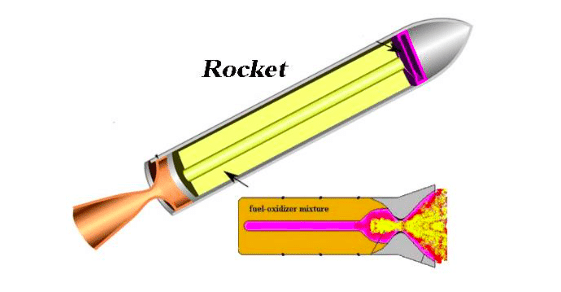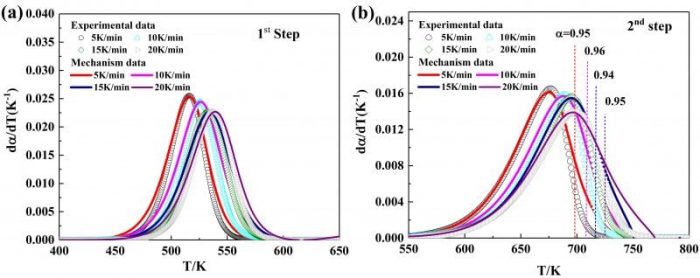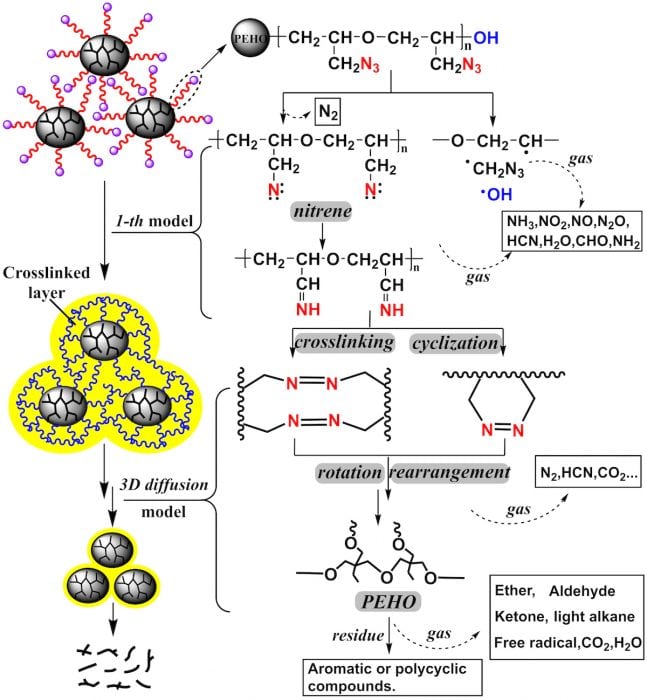
A high energy for rocket fuel is one of the main goals pursued by scientists. Azido groups have a positive heat of formation and release a large amount of heat in pyrolysis. Therefore, several azide polymers (such as GAP, PBAMO, and PAMMO) are used as the fuel binder for rockets.
However, they exhibit poor low-temperature properties due to their low molecular weight and short polyether main chain.

In order to solve these problems, we have designed and synthesized a multi-arm azide copolymer (POG) which possesses a high molecular weight and low glass transition temperature. The pyrolysis behavior of POG for use as rocket fuel plays a crucial role in burning rate and safety characteristics.
Based on the complex multiple pyrolysis of POG, its decomposition kinetics and mechanism were studied in an experiment and through a detailed simulation. Mathematical function deconvolution is a simple and effective method for a multi-step reaction. The asym2sig function is beneficial for the deconvolution of POG pyrolysis curves. Trough deconvolution and kinetics analysis methods, the kinetic triplets of POG pyrolysis were successfully obtained, revealing that n-th order model and 3D diffusion model met the two different pyrolytic stages of POG (Fig.1).

Fig.1: Mechanism model of POG pyrolysis in two different stages
To further investigate the pyrolytic reaction process, the residual morphology and gaseous products are captured by SEM and TG-FTIR-MS. These results cannot get intermediate reactions, and the burning temperature of rocket fuel can reach thousands of degrees Celsius. Hence, molecular simulation is a good method for POG pyrolysis at high temperatures. Through ReaxFF-MD simulation, the intermediate reactions of -N3 decomposition were observed.
Based on these experiment and simulation results, we proposed the “crosslinked layer transition theory” of POG pyrolysis. The inter- and intramolecular crosslinking cyclization reaction of nitrenes, produced by azido group cracking, form a new crosslinked transition layer lagging the decomposition of hyperbranched polyether core. The detailed pyrolysis mechanism of POG is presented in Fig.2. The study can provide useful insights into the pyrolysis mechanism and kinetics for the efficient utilization of POG as rocket fuel.

Fig. 2: The pyrolysis mechanism of POG
These results are described in the article entitled Multistep pyrolysis behavior of core-shell type hyperbranched azide copolymer: Kinetics and reaction mechanism via experiment and simulation, recently published in the journal Fuel.
This work was conducted by Guangpu Zhang, Jinqing Li, Mengyun Zhang, Shixiong Sun and Yunjun Luo from the Beijing Institute of Technology.









